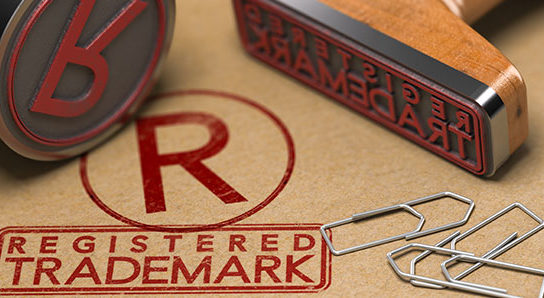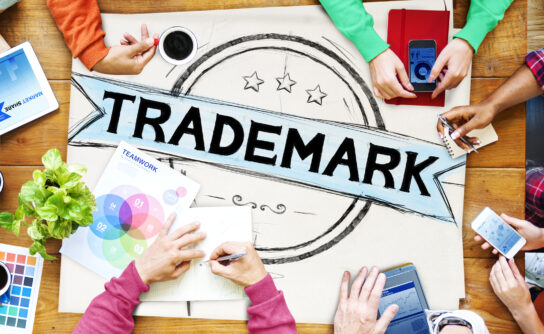By registering your trademark, you will enhance the legal protections afforded to your brand.
It ensures the public knows the proper and accurate source for your business’s products or services. Trademark law helps your business distinguish itself from the competition and prevents others from confusing your customers. If you plan to expand your business or venture online, you need to give serious thought to trademark registration. The process may seem daunting to small business owners, but this workshop was designed specifically to explain it in understandable terms and spell out the steps involved with a trademark application.
What can be Trademarked?
No set list describes exactly what can be trademarked, but the most common are words or phrases and graphics that are not generic or descriptive of their meaning. Registered trademarks also exist for certain sounds, colors, and (yes) smells. Though just about anything can potentially be a trademark, it must meet the definition defined by the USPTO to be considered valid.
For example, the word “Apple” cannot be used as a trademark for something that refers to fruit, food or farm involving apples, but of course, it can be used as a trademark for a computer company. Clearly, this can get confusing fast when attempting this on your own — which is why we firmly recommend having your trademark reviewed by a licensed trademark attorney before submission to the USPTO. When you choose L4SB to file your trademark, you don’t need to worry — included in our trademark filing package are an attorney review and consultation. We will examine your trademark and help you revise it so that it has the best chance of meeting the USPTO definition and being accepted.
It’s a Balancing Act Between Cost, Availability of the Mark and Breadth of Coverage
The question you need to ask yourself when registering a trademark is, what specific element(s) do you consider “unique” and want to prevent others from potentially using, duplicating or creating a “likelihood of confusion?”
Do you want to prevent anyone from using any portion of your trademark? If so, then paradoxically, registering the entire thing will not protect all the elements individually. Registering the entire trademark will only prevent someone else from creating a likelihood of confusion for the entire mark, not specific elements within the mark. To learn more about “likelihood of confusion, read our article entitled, Likelihood of Confusion — Don’t Be Confused by Trademark Law.
Therefore, if you want to prevent others from using any specific element of your trademark, then it’s critical that you register those specific elements of your trademark that you want protection. If you don’t care, and only want to prevent someone from using the entire thing, then registering the entire thing is appropriate.
Unfortunately the US Patent and Trademark Office (USPTO) charges for each trademark registration, and registering each element separately represents a separate trademark registration and cost.
Breadth versus Registrability in Registering a Trademark
A “word mark” is considered the strongest form of trademark protection you can obtain. Read more about this in a blog article I previously wrote, entitled Standard Character Marks vs Stylized Logos. The problem is, there can be many reasons you’re unable to obtain a word mark for the name of product or service, including:
- The name is descriptive
- The name is a surname (read more about this)
- The name is geographically misdescriptive
- The name is geographically descriptive (a subset of descriptive)
- The name is common or creates a likelihood of confusion with another trademark
When confronted with a problem registering a word mark, a design mark can be a good fallback option to at least protect the logo or other important aspects of the mark.
In the world of trademark law, the general rule is to seek registration of the simplest form of your mark that will pass muster and be approved. This means, cut out the slogan or tagline. Register the logo alone, and create a separate registration with the logo and name. Register a black-and-white logo, not color.
Some Additional Comments About Trademark Law
Remember that when registering a trademark, you will need to renew your trademark in five (5) years. To do this, you must use your trademark in commerce for those five (5) years consistently, without modification. This has some practical implications you should consider now, while thinking about trademark registration.
- First, what are the odds you may want to change your tagline or slogan down the road? If such a thing is included in your trademark, you better NEVER change it otherwise you could lose your trademark.
- Second, what are the odds you may want to change your logo down the road? Same issue. If you change your logo, and that logo is a part of your trademark, you could lose your trademark when it comes time to renew it.
- Third, love your slogan and want to register it as a trademark? Remember that you can only trademark “source identifiers” for goods or services. Are you using your slogan, by itself, as a “source identifier?” If not, your trademark application (for the slogan alone) will not get approved.
- Fourth, are there many elements to your logo and do you want to use different forms or flavors of your logo? Avoid it. It’s important to use your logo consistently and continuously. You can surely use components of your logo to accent your brand (i.e. taking elements to use as bullets in paragraphs, watermarking pages and more), but don’t inconsistently use your trademark for source-identification. This must be consistent.
- Fifth and finally, is color really important? I know you think it is, but would you be upset if someone had a similar logo, but using different colors? If so, then you want to register a black-and-white logo, without claim to any specific color.
Ready to register your trademark? Visit our trademark registration page. Maybe you would like to consult with an Intellectual Property Attorney first? Visit our trademark consultation page . Whatever your trademark needs, L4SB has you covered!
Please contact us to discuss your needs and how we can help you.
Law 4 Small Business. A little law now can save a lot later. A Slingshot company.




